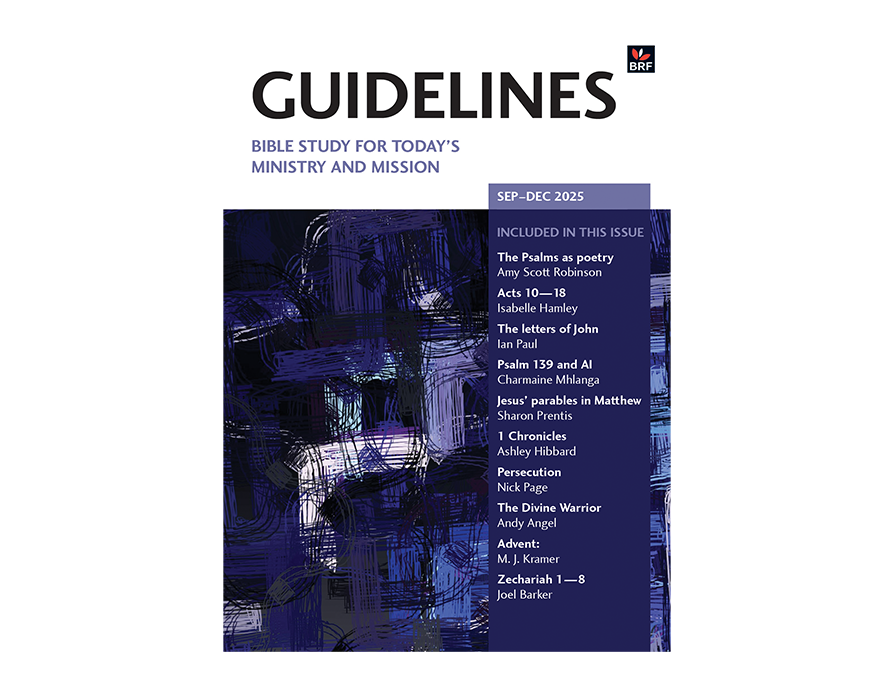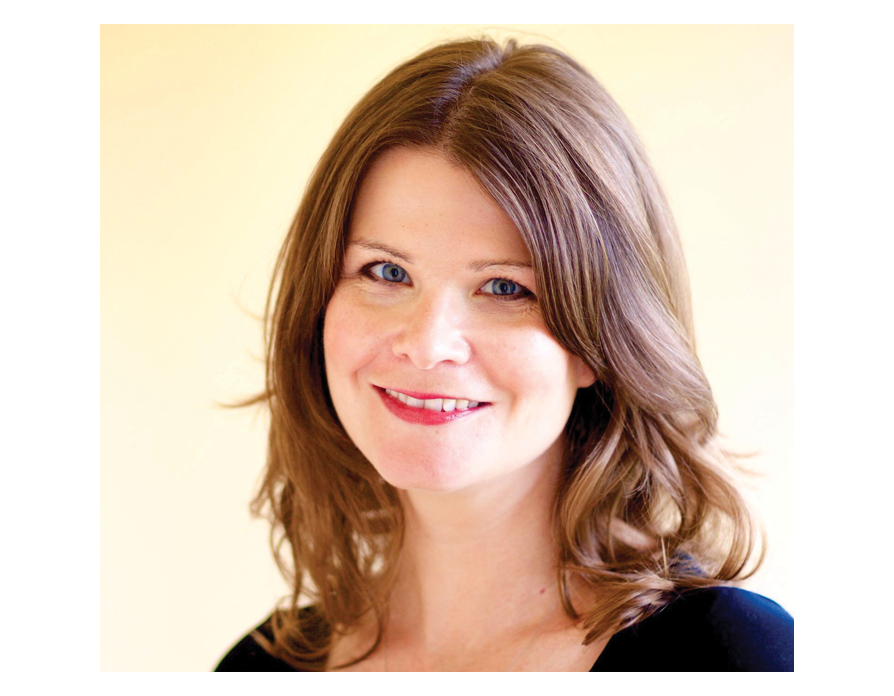Guidelines is our series of Bible reading notes for readers interested in in-depth study: people who want to engage deeply with the text and a wide range of contemporary biblical scholarship. To give you a taste of what Guidelines offers, this is an extract from Tanya Marlow’s powerful reflections on disability: ‘A disabled reading of the healing miracles’, which begins tomorrow, 18 August.
17 August 2025
A disabled reading of the healing miracles
I am an occasional lecturer in pastoral theology. Whenever I meet a new group of trainee ministers, I ask them how they would preach one of the healing miracles, for example, the healing of the paralysed man or blind Bartimaeus. They outline their sermon with ease. Then I ask the crucial question, ‘What if there’s a wheelchair user or blind person in your congregation?’ and I watch carefully as they squirm, realising that there are significant pastoral implications for the supposedly straightforward spiritual message.
How do we preach Jesus healing ‘the deaf’ when our Deaf congregant (who uses a capital D as a marker of identity and community) takes offence at the idea that deafness is a deficiency that needs correcting, rather than a beautiful gift? How do you explain the story of the immobile man at the pool of Bethesda whom Jesus warns about something worse happening to him, when facing you is a 13-year-old boy with Long Covid who now can’t walk?
Understanding disability and healing
I have myalgic encephalomyelitis (ME), a devastating multi-system illness that has left me almost entirely bedbound for the last 15 years, though I can leave the house for a few hours in a wheelchair once a week or so. My ongoing, unhealed illness and suffering often makes other Christians uncomfortable. Even if a pastor doesn’t believe that my sickness is caused by my sin or lack of belief, many church members do, and will tell me so. If this isn’t addressed from the front, theologically, sadly the outcome is chronically ill people feeling forced from the church or the faith. As we study the gospels with fresh lenses, let’s remember the pastoral and evangelistic importance of fine-tuning our understanding of disability and healing.
Separating sin and sickness
Read Mark 2:1–12 (NRSV)
Most disabled Christians have heard two things from the church at some point: first, that their condition is caused by their sin; second, that it is caused by their lack of faith. A careful reading of the story of the paralysed man in Mark 2 debunks both assumptions.
The phrase that strikes me in the first five verses is ‘having dug through [the roof]’ (v. 4). I have never seen a religious painting of this scene that shows debris falling on Jesus’ head and the owners of the house pointing upwards in indignation as their property is damaged, yet that is surely what must have happened as the four people partially destroyed the roof so that Jesus could meet their friend. Mark’s gospel plays with the contrast of ochlos (the crowd, where Jesus ministered) and oikos (the home, where Jesus gave more intimate revelations). Discontented to be part of the anonymous crowd, the paralysed man and his friends break rules and buildings in order to be seen by Jesus. Even today, disabled people often have to fight for full inclusion in churches, and buildings must be altered.
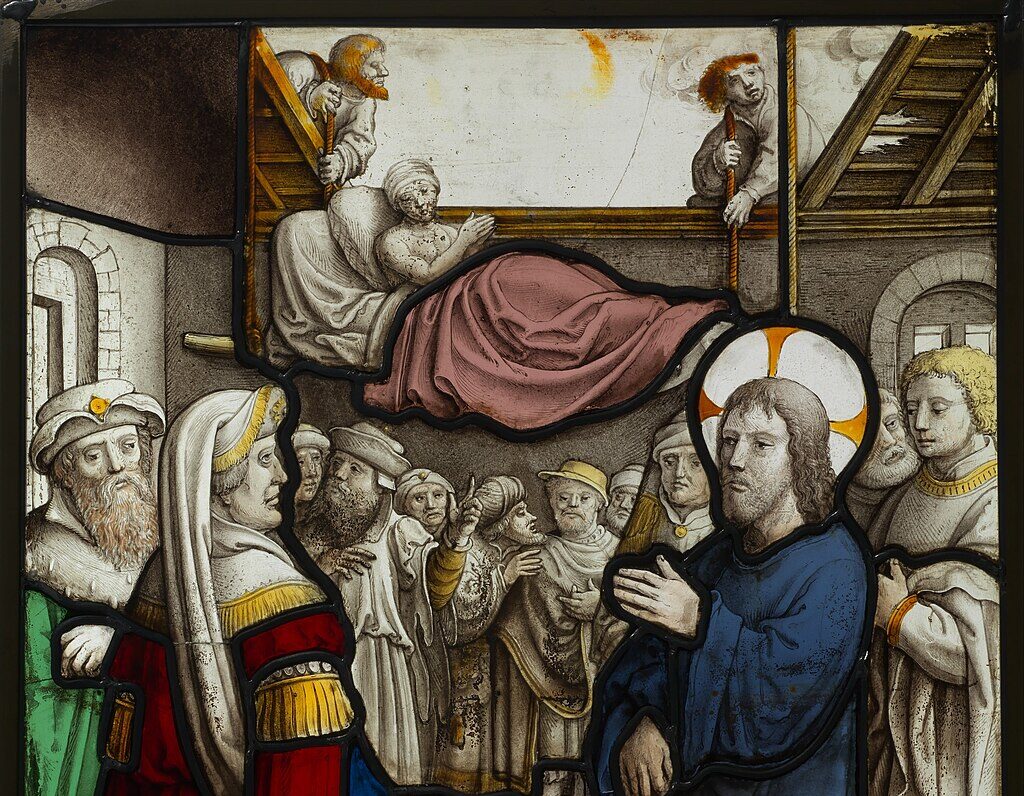
Discontented to be part of the anonymous crowd, the paralysed man and his friends break rules and buildings in order to be seen by Jesus.
Jesus doesn’t respond with indignation at their forced entry, but admiration for ‘their faith’ (v. 5) – carers and patient. Consider: if it is possible that Jesus heals people because of others’ faith, presumably sick people can’t be held responsible for their supposed lack thereof. Jesus compassionately calls the paralysed man teknon, ‘child’, or perhaps ‘son’, before declaring his sins forgiven.
Why, when someone’s need was so obviously for healing, does Jesus focus on his sins (v. 5)? Some argue that this man’s immobility was caused by sin, or that his sins were particularly awful; others assume that Jesus’ priority is not for our physical wholeness but our spiritual well-being. After Jesus’ declaration of forgiveness, the scribes immediately debate the authority of forgiving sins. Yet, as a disabled person, I notice what doesn’t happen. When the man’s sins are declared forgiven, he does not get immediately healed. If sin is so clearly linked to disability, you would expect him to be healed as soon as Jesus forgave his sins. By separating out forgiveness from healing, Jesus clearly, deliberately, delineates between sin and sickness. The delayed healing is not principally for the education of the crowd but a pastoral restoration for the suffering and excluded disabled man.
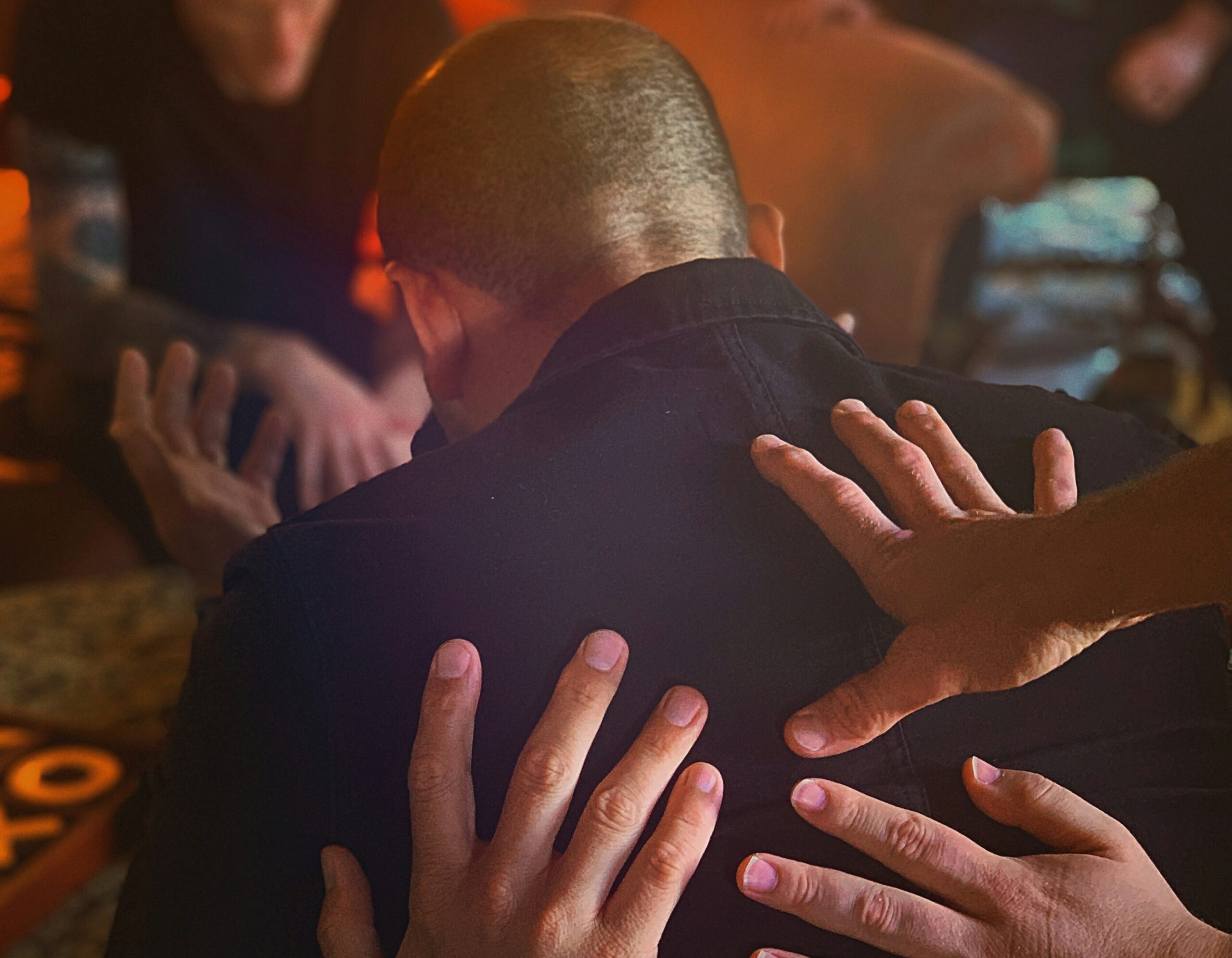
As a disabled person, I notice what doesn’t happen. When the man’s sins are declared forgiven, he does not get immediately healed.
Chronic illness and condemnation
‘Now in Jerusalem by the Sheep Gate there is a pool, called in Hebrew Beth-zatha, which has five porticoes. In these lay many invalids – blind, lame, and paralysed. One man was there who had been ill for thirty-eight years. When Jesus saw him lying there and knew that he had been there a long time, he said to him, “Do you want to be made well?” The sick man answered him, “Sir, I have no one to put me into the pool when the water is stirred up; and while I am making my way, someone else steps down ahead of me.” Jesus said to him, “Stand up, take your mat and walk.” At once the man was made well, and he took up his mat and began to walk.’
John 5:1–9 (NRSV)
Read the whole story in John 5:1–16 (NRSV).
The list of commentators queuing up to vilify the chronically ill man healed by Jesus is shockingly long. Jesus’ question, ‘Do you want to be made well?’ (John 5:6) is seen as a test of faith, which the man fails by omitting a definite ‘yes’. The fact that he doesn’t have a friend to help him into the water is dismissed as a weak excuse: clearly, he doesn’t want to be healed. One theologian quoted a racist proverb of people preferring begging to healing. Jesus’ words, ‘Do not sin any more’ (v. 14), are interpreted as his sin having caused his sickness, and ‘so that nothing worse happens to you’ (v. 14) is Jesus threatening to withdraw the healing if he continues sinning. Finally, he is seen as especially stupid or evil for initially not knowing who healed him (v. 13), and then for later naming Jesus as his healer (v. 15) because this led to ‘the Jews… persecuting Jesus’ (v. 16).
I am that lame man, and I feel those stings personally. He had been living in desperate limbo for 38 years; for me, it’s been almost 15 years of being mainly bedbound. Society is very sympathetic to acute suffering but less sympathetic as the suffering continues. Eventually, people are blamed for their misfortune. If I reject an alternative medicine suggestion, often the suggester becomes hostile and claims I want to remain ill. My sickness has also been blamed on my sin and my personality.
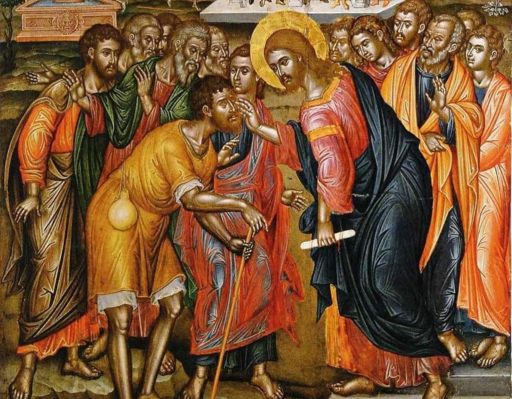
Society is very sympathetic to acute suffering but less sympathetic as the suffering continues.
A warning for us all
The man, with no hope of medical cure, is desperate for alternative medicine, but his disability prevents him from accessing the ‘magic’ cure of the disturbed waters. When Jesus asks if he wants to be well, it is not a test but a compassionate offer of help. Though the man can’t see beyond the pool as the mechanism of his healing, Jesus swiftly heals him with a command, with no appeal to confession or declaration of forgiveness. Jesus’ words about sinning in verse 14 should be read in the context of John 9:1–2, where Jesus resists associating sickness with sin, and Luke 13, where Jesus explains that the victims of the Tower of Siloam falling were not worse sinners, but ‘unless you repent, you will all perish’ (Luke 13:5). The ‘something worse’ of Jesus’ warning to the man is therefore eschatological and a warning for us all.

